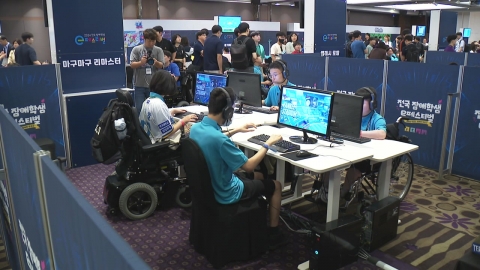Consumer prices in September, 1% range for the first time in 3 years and 6 months...Heatwave Enthusiasticity
[Anchor]
Consumer price growth slowed to around 1% for the first time in three and a half years.
Oil prices turned downward for the first time in seven months, dragging down overall prices.
However, the price of vegetables such as cabbage and radish rose sharply due to the heatwave, showing an unstable trend.
Connect reporters.
Reporter Oh In-seok, please tell me the details.
[Reporter]
Yes, the National Statistical Office reported last month that consumer prices were up 1.6% from a year ago.
It is the first time in three and a half years that prices have slowed to the 1% level since March 2021 when they were 1.9% in the year.
Consumer prices have been in the 2% range for five months since April this year, before falling 0.4% points in September from a month earlier.
Core prices, which show a trend in prices, rose 1.8% for the agricultural and petroleum exclusion indexes and 2.0% for the food and energy exclusion indexes, respectively.
The living price index, which is close to the perceived price, rose 1.5% and fell to around 1%.
While agricultural, livestock, and fisheries products rose 2.3%, vegetable prices surged 11.5% due to the heat wave, driving up agricultural prices.
Cabbage rose 53.6%, radish 41.6%, and lettuce rose 31.5%.
Fruit prices were steady, but apples fell 4.8%.
Oil prices are down 7.6%.
It has fallen for the first time in seven months since February this year, dragging down overall prices by 0.32 percentage points.
However, the conflict between Iran and Israel early this morning has caused international oil prices to soar, potentially destabilizing oil prices again in the future.
As for the possibility of inflation continuing around 1% in the fourth quarter, the National Statistical Office explained that vegetables are affected by weather and oil prices are affected by international oil prices, so we need to watch this more.
The government said it plans to supply an additional 10,000 tons, including early shipments of 6,000 tons of available government supplies to stabilize supply and demand for cabbages and radishes, which are scheduled to end at the end of this month, and extend the allocation tariff on cabbages and radishes until the end of the year.
So far, the National Statistical Office has informed you.
※ 'Your report becomes news'
[Kakao Talk] YTN Search and Add Channel
[Phone] 02-398-8585
[Mail] social@ytn.co.kr
Consumer price growth slowed to around 1% for the first time in three and a half years.
However, the price of vegetables such as cabbage and radish rose sharply due to the heatwave, showing an unstable trend.
Connect reporters.
Reporter Oh In-seok, please tell me the details.
[Reporter]
Yes, the National Statistical Office reported last month that consumer prices were up 1.6% from a year ago.
It is the first time in three and a half years that prices have slowed to the 1% level since March 2021 when they were 1.9% in the year.
Consumer prices have been in the 2% range for five months since April this year, before falling 0.4% points in September from a month earlier.
Core prices, which show a trend in prices, rose 1.8% for the agricultural and petroleum exclusion indexes and 2.0% for the food and energy exclusion indexes, respectively.
The living price index, which is close to the perceived price, rose 1.5% and fell to around 1%.
While agricultural, livestock, and fisheries products rose 2.3%, vegetable prices surged 11.5% due to the heat wave, driving up agricultural prices.
Cabbage rose 53.6%, radish 41.6%, and lettuce rose 31.5%.
Fruit prices were steady, but apples fell 4.8%.
Oil prices are down 7.6%.
It has fallen for the first time in seven months since February this year, dragging down overall prices by 0.32 percentage points.
However, the conflict between Iran and Israel early this morning has caused international oil prices to soar, potentially destabilizing oil prices again in the future.
As for the possibility of inflation continuing around 1% in the fourth quarter, the National Statistical Office explained that vegetables are affected by weather and oil prices are affected by international oil prices, so we need to watch this more.
The government said it plans to supply an additional 10,000 tons, including early shipments of 6,000 tons of available government supplies to stabilize supply and demand for cabbages and radishes, which are scheduled to end at the end of this month, and extend the allocation tariff on cabbages and radishes until the end of the year.
So far, the National Statistical Office has informed you.
[Kakao Talk] YTN Search and Add Channel
[Phone] 02-398-8585
[Mail] social@ytn.co.kr
[Copyright holder (c) YTN Unauthorized reproduction, redistribution and use of AI data prohibited]
Editor's Recomended News
AD
The Lastest News
-
Korea-Japan summit's first call... "Korea-Japan, Korea-U.S. need to respond in unity"
-
Israel continues to attack Gaza...the death toll in succession
-
The 'Both Special Prosecutors and Local Currency Act' Returned to the National Assembly, Re-Voting the Day After tomorrow
-
Lee Hwa-young, who attended the National Assembly while imprisoned, said, "Prosecutors are endlessly conciliatory and pressured."




![[Field Y] Lee Chang-seop said,](https://image.ytn.co.kr/general/jpg/2024/1002/202410021636404313_h.jpg)
![[29th Bu Gukje] Director of the opening film 'Jeon and Lan'...](https://image.ytn.co.kr/general/jpg/2024/1002/202410021635050868_h.jpg)
![[29th International Film Festival] For the first time ever...Why the Netflix movie was chosen as the opening film](https://image.ytn.co.kr/general/jpg/2024/1002/202410021624220184_h.jpg)



